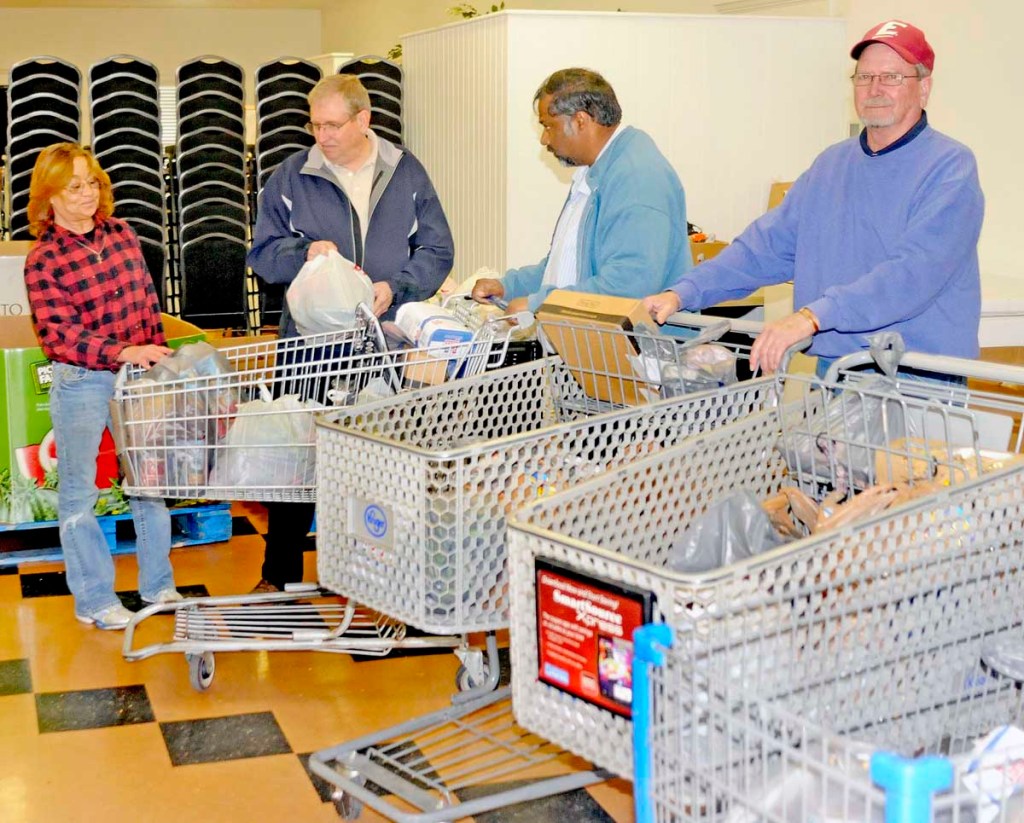National report shows fewer Ky. residents going hungry because of food insecurity
Published 2:45 pm Thursday, May 4, 2017

- God’s Outreach Food Bank volunteers in Kentucky load shopping carts and prepare to help recipients deliver food to their vehicles. According to the Map the Meal Gap 2017 report, more than 13,000 Madison County, Kentucky, residents are food insecure, which means they lack reliable access to a sufficient quantity of affordable, nutritious food.
While nearly 16 percent of Kentuckians don’t have immediate access to healthier food options, the numbers are improving, according to a new report by the nation’s largest hunger relief organization, Feeding America.
The report, Map the Meal Gap 2017, revealed the estimated number of Kentuckians who are food insecure — lacking reliable access to a sufficient quantity of affordable, nutritious food — dropped from 743,310 to 699,590 this past year. The number food insecure children dropped by nearly 20,000 from 222,380 last year to 202,050 this year.
The Map the Meal Gap report also revealed that food insecurity exists in every county in Kentucky. Overall, food insecurity ranges from a low of 8 percent of the population in Oldham County up to 23 percent in Wolfe County. Kentucky’s overall food insecurity rate of 15.8 percent decreased slightly from the previous year’s rate of 16.8 percent. The national average food insecurity rate across all counties is 14 percent.
“Though far too many Kentuckians continue to struggle to put healthful food on the table, we are encouraged by the movement in the right direction on hunger in Kentucky,” Tamara Sandberg, Executive Director of the Kentucky Association of Food Banks, said.
Sandberg pointed to the Commonwealth being a leader in strong public-private partnerships working to end food insecurity. She noted Kentucky Department of Agriculture Commissioner Ryan Quarles’s Hunger Initiative and the Kentucky Legal Food Frenzy sponsored by Attorney General Andy Beshear.
“We are committed to implementing creative solutions to the problem of hunger until the day when no Kentuckian has to go to bed hungry,” Sandberg said.
On the national scale, the report reveals that states like New York, Texas, California, Michigan and Pennsylvania contain the counties with the highest number of food-insecure individuals based on 2015 data.
The data also shows that while the 50 counties with the largest numbers of food-insecure people encompass the entirety of large cities, the issue of hunger is not isolated to large metropolitan areas. For instance, DeKalb County, Georgia — with a reported 139,970 food-insecure individuals — includes parts of Atlanta, but also includes suburbs where food insecurity exists located east of the city.
Back in Kentucky, KAFB serves as the state’s largest charitable response to hunger. Members of the association distributed the equivalent of 58 million meals last year in partnership with more than 800 partner agencies such as soup kitchens and shelters. KAFB feeds one in seven Kentuckians each year in all 120 counties in Kentucky.
“This study underscores the need for strong federal nutrition programs as well of the importance of charitable food assistance programs, especially the food pantries and meal programs served by the Feeding America network of food banks” said Diana Aviv, CEO of Feeding America.
Map the Meal Gap 2017 uses data from the U.S. Department of Agriculture, U.S. Census Bureau, U.S. Bureau of Labor Statistics and food price data and analysis provided by Nielsen. A hunger-focused interactive map of the United States is available here.
Greene is the editor of the Richmond, Kentucky Register.



